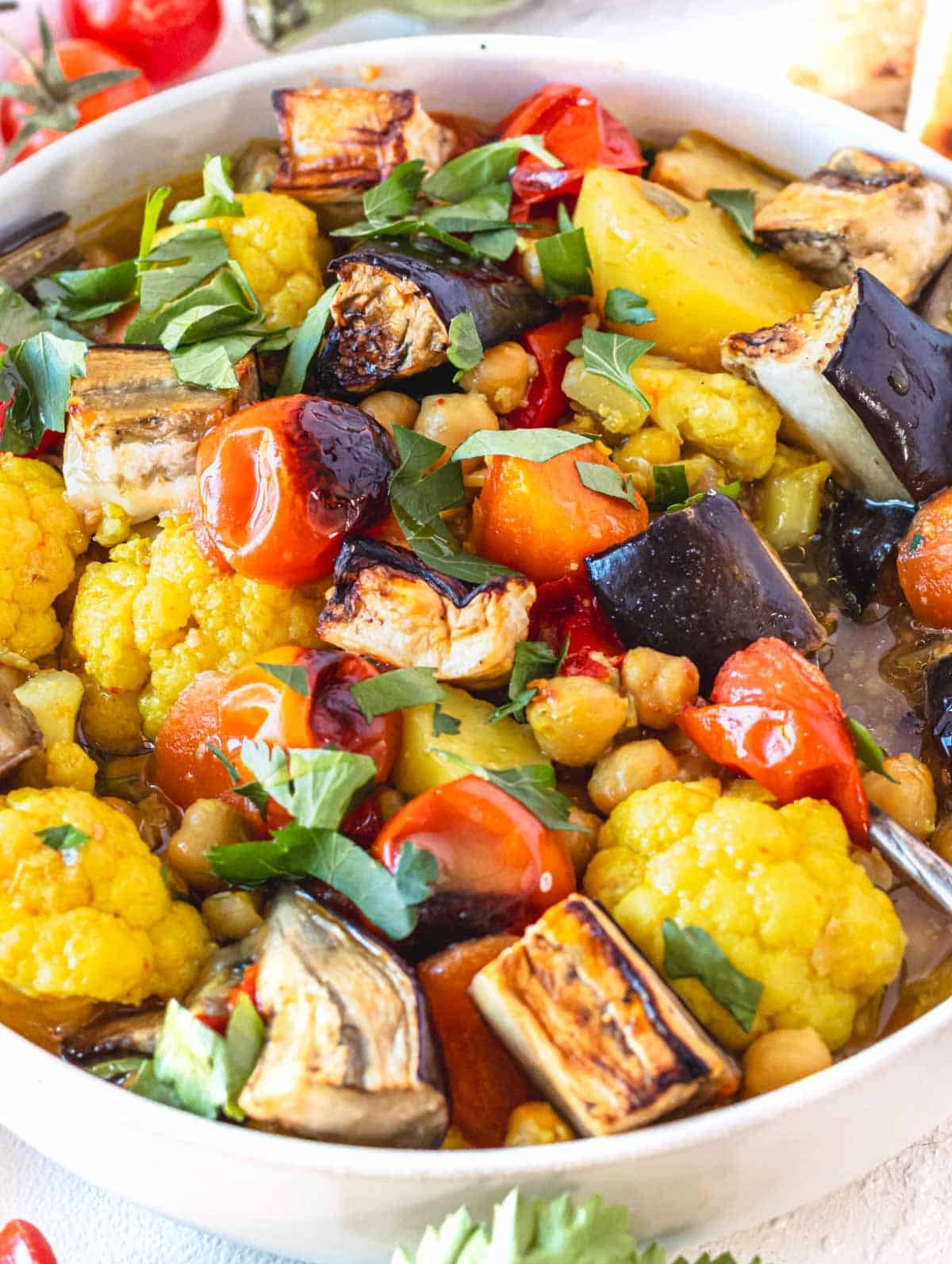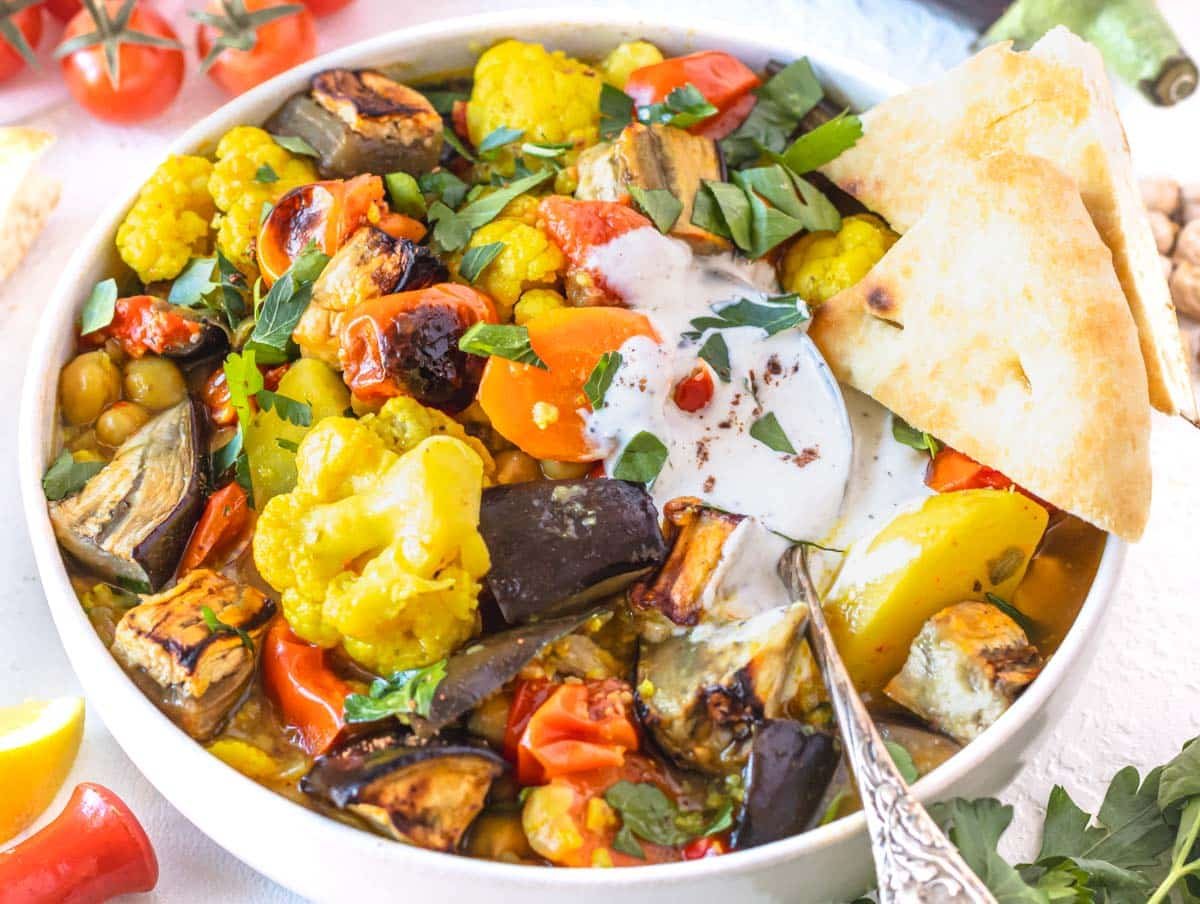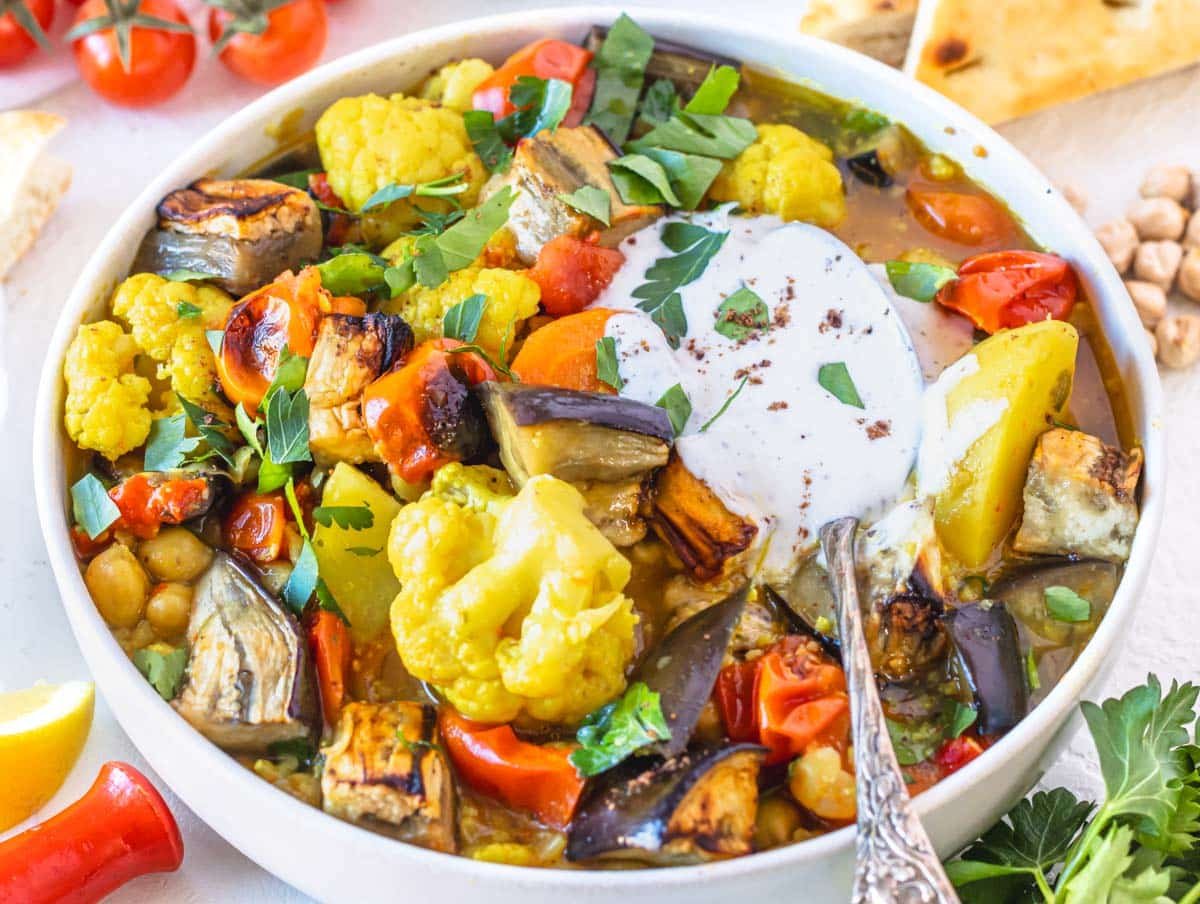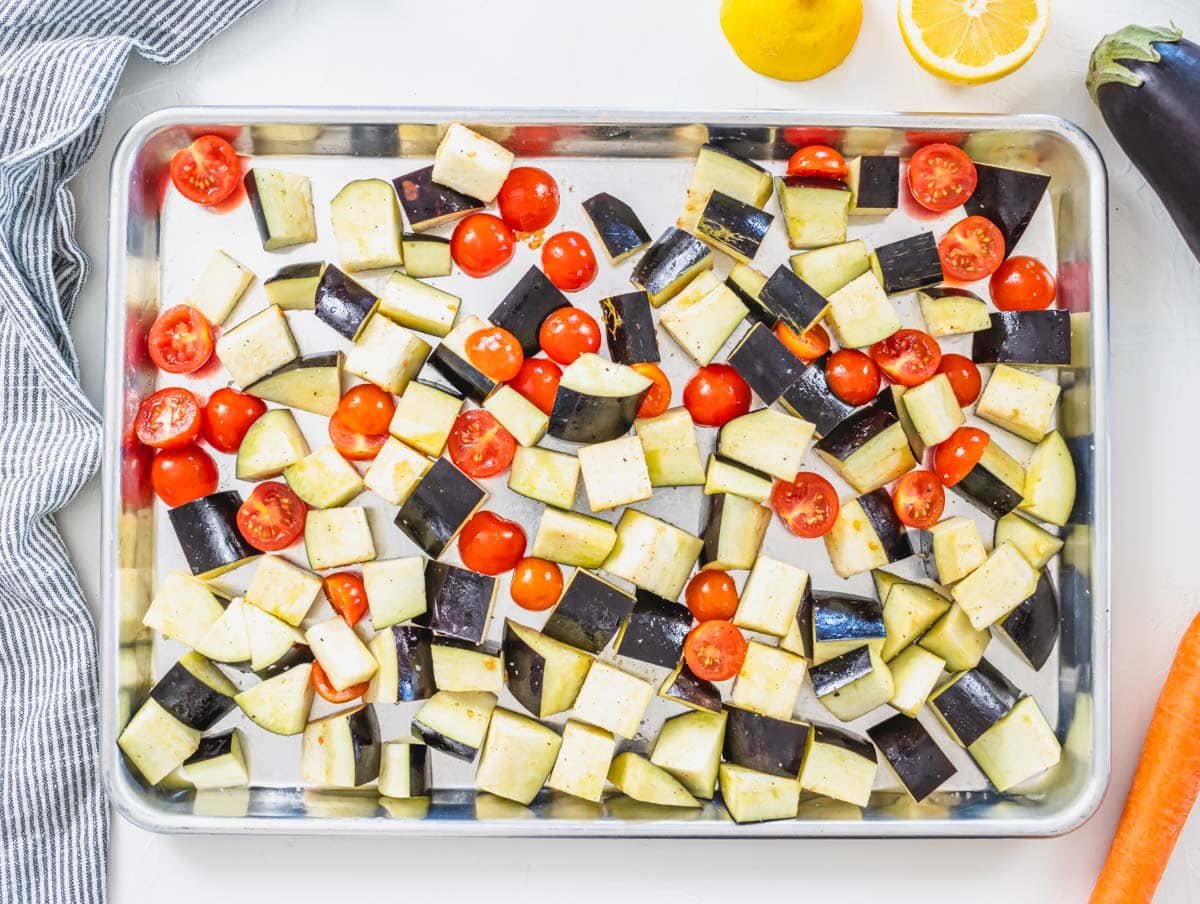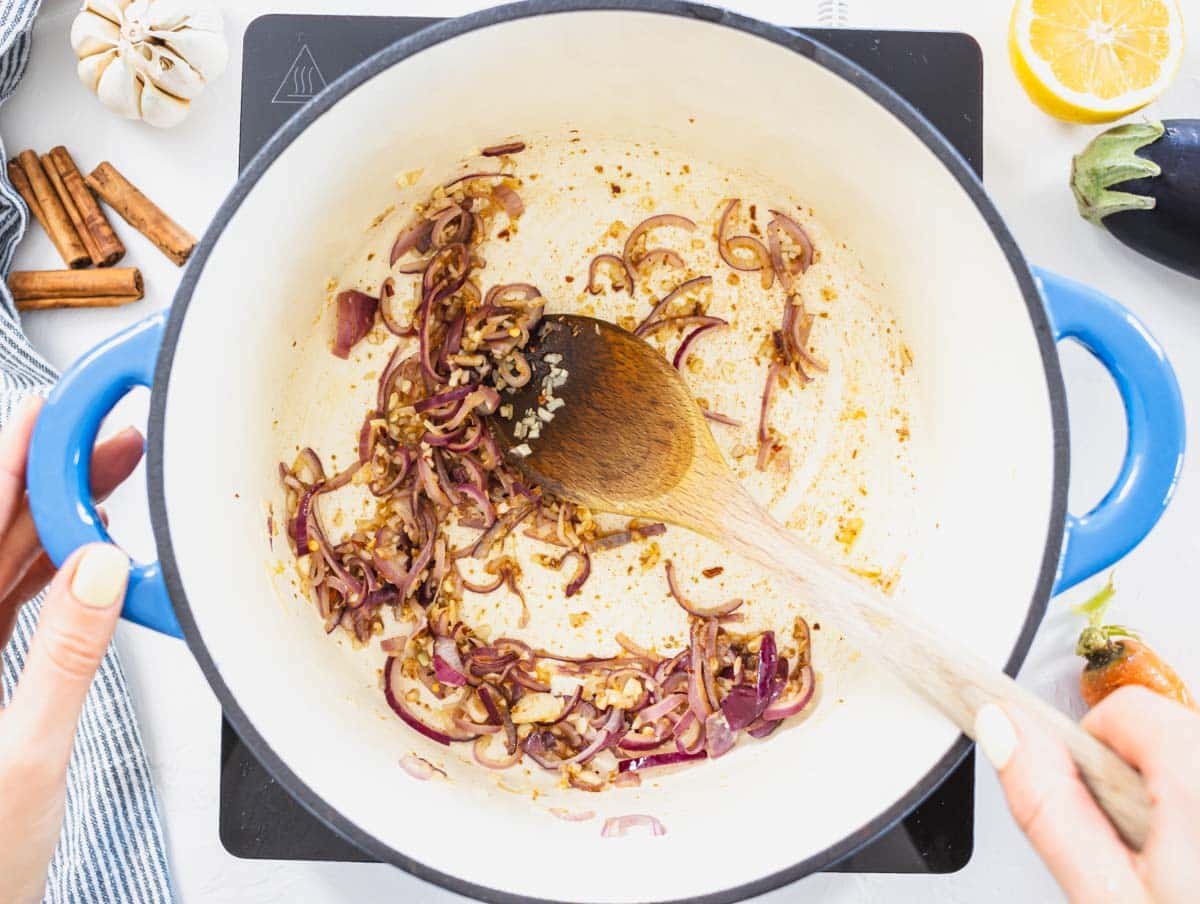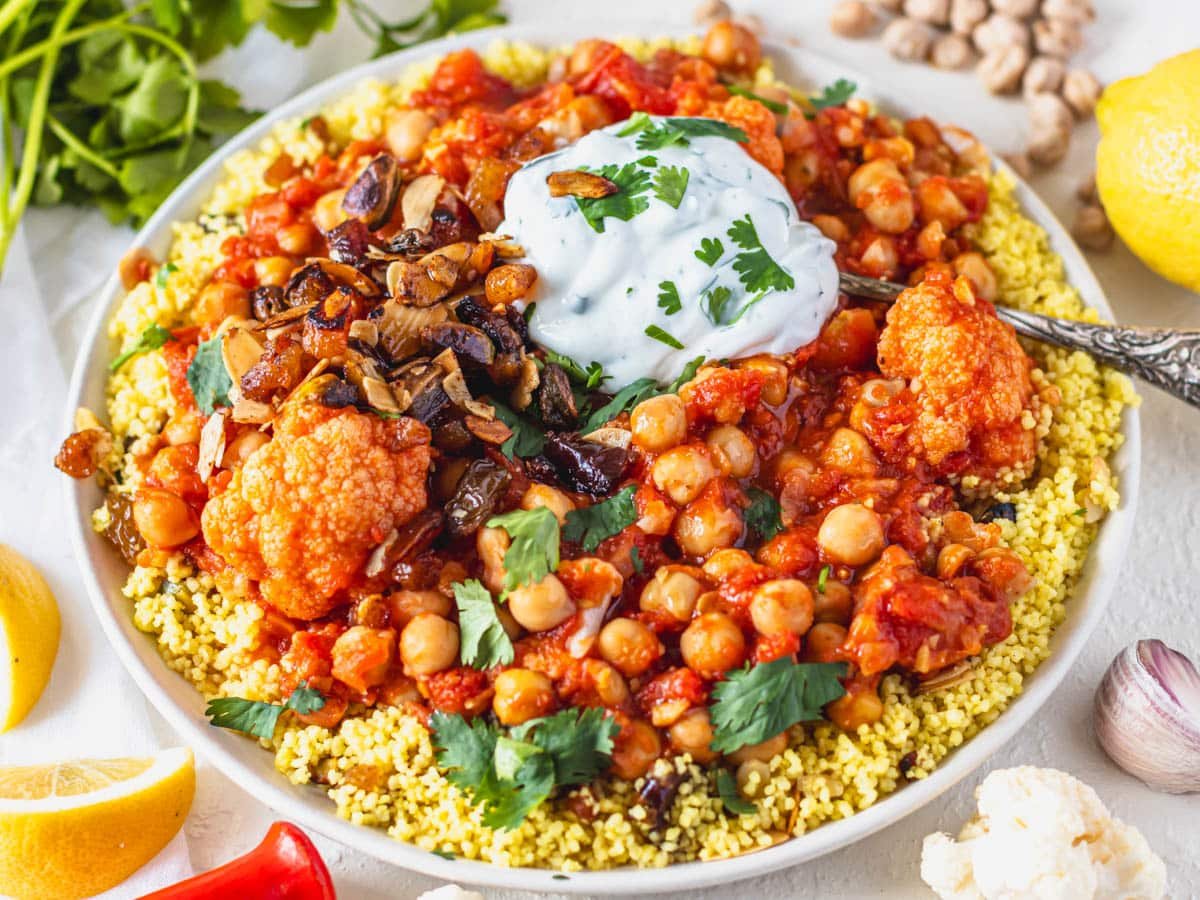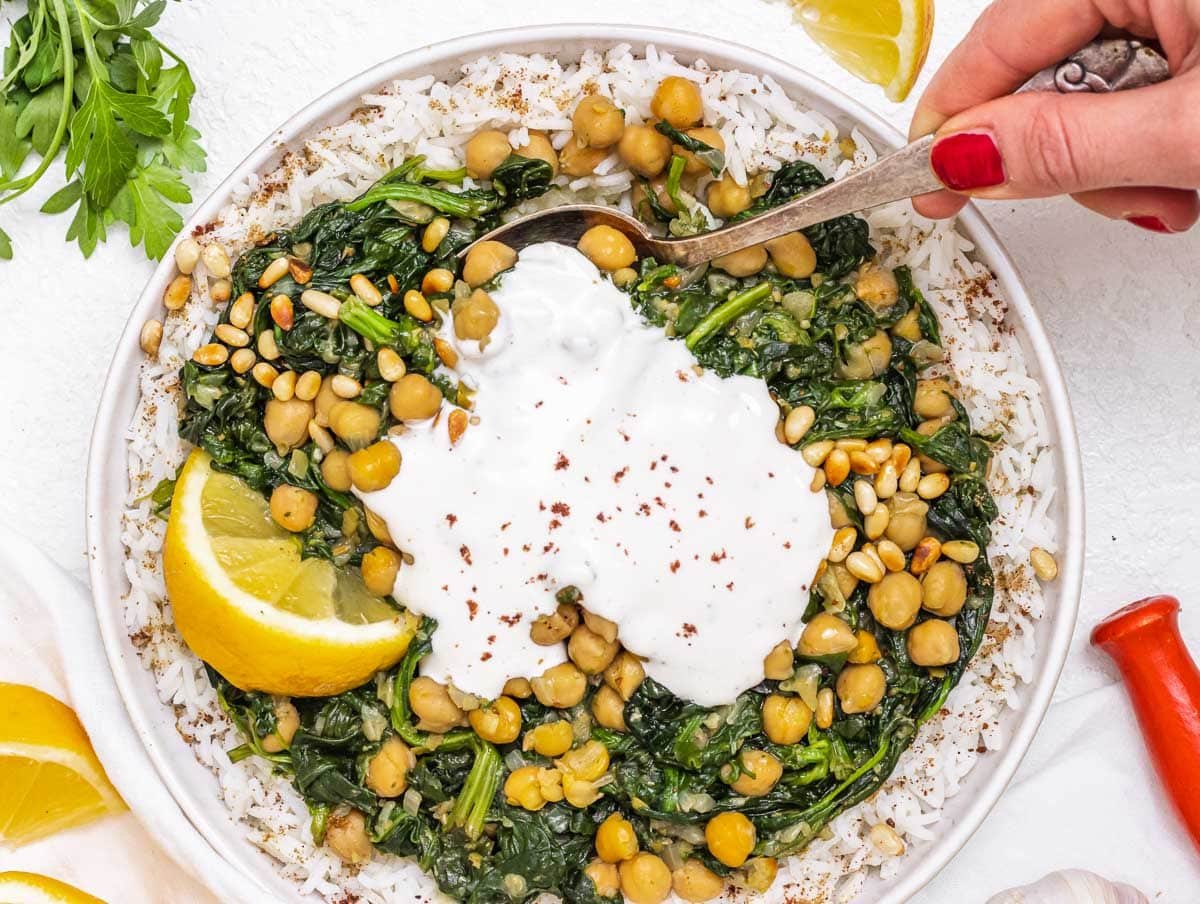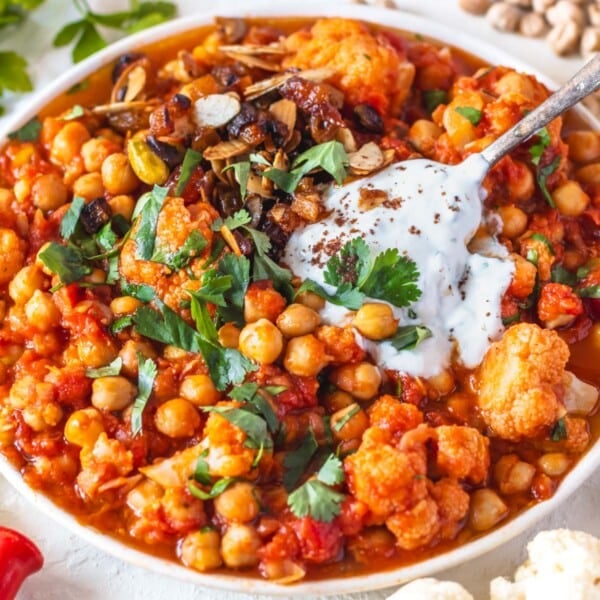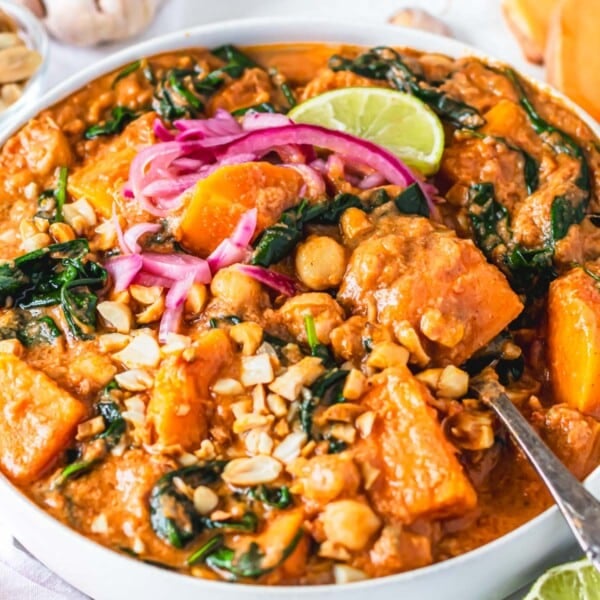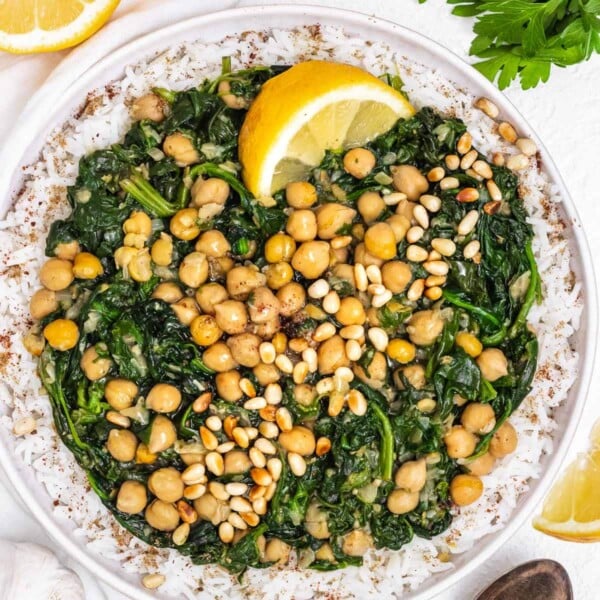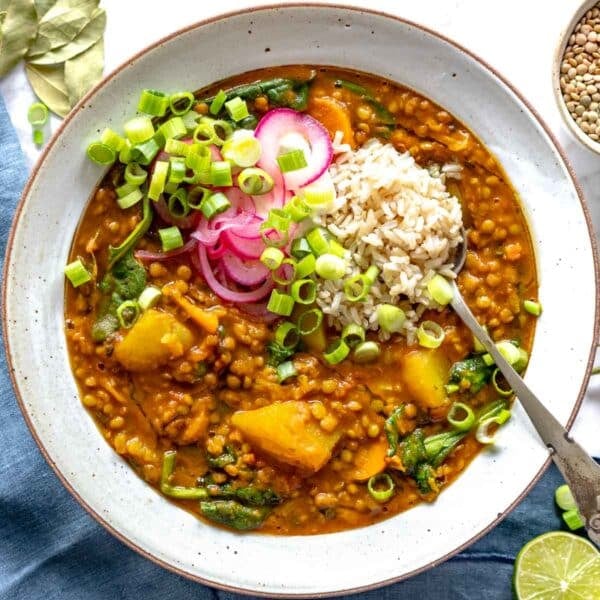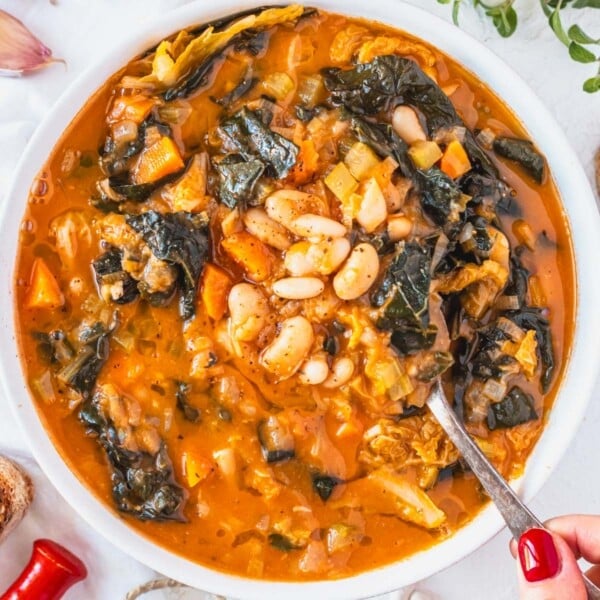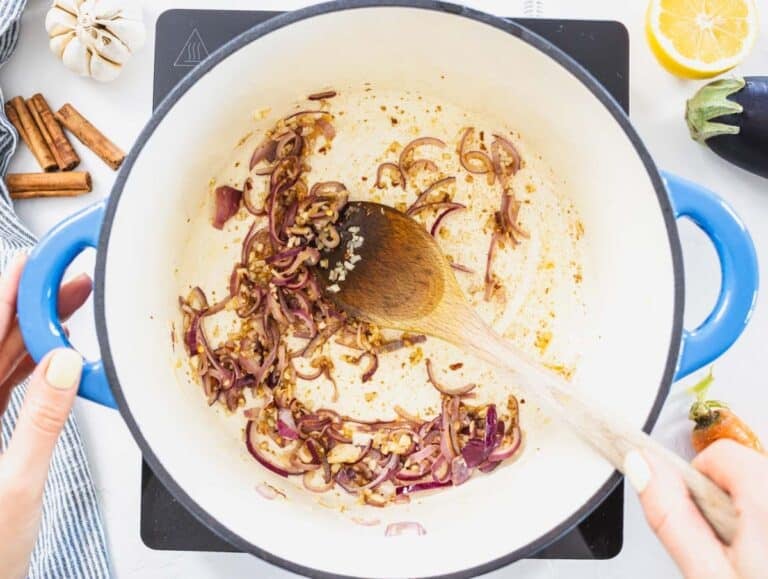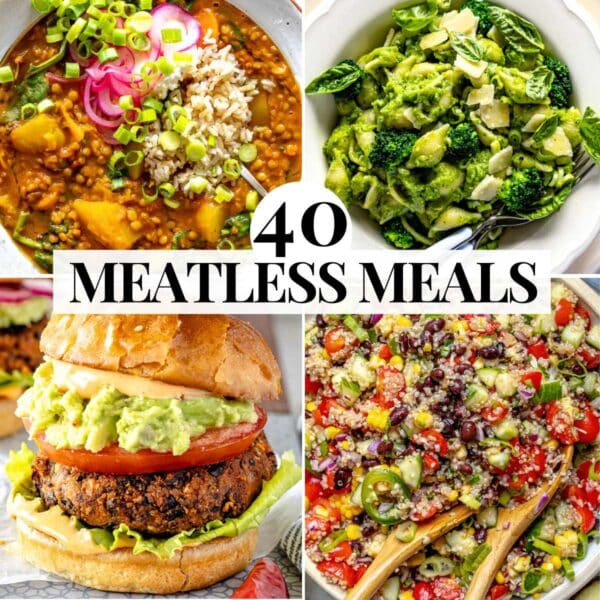It is an excellent dish for a weeknight dinner or meal prep, as you can make it in 30 to 40 minutes with the veggies you have on hand or with what’s in season. The rich, savory, umami-packed broth of this hearty vegetable stew will make you ask for more. The veggies and legumes will nourish and satiate you. Dietary Note: this recipe is suitable for a vegetarian, vegan, and gluten-free diet.Don’t have time to read the full blog post? JUMP TO RECIPE HERE!
What is vegetable stew?
Ingredients & substitutions for vegetable stew
How to make the best vegetable stew
Serving suggestions
Variations
Storage & Make Ahead
More stew recipes
Similar recipes
From Moroccan chickpea stew and vegetable tagine to African peanut stew and Tuscan bean stew. To the east, with a Mediterranean spinach stew and Indian Navratan korma, stews are an excellent way to serve a tasty, veggie-packed, nourishing meal everyone loves. This hearty vegetable stew recipe combines our favorite techniques and ingredients to create the most delicious, easy, and nutritious stew you can make. Every good stew should start with a flavor base or soffritto. Use olive oil, onion, and garlic to build flavor from the ground up. Then add spices to enrich the flavor base. We use turmeric, cumin, and red pepper flakes. We learned this from Indian recipes. Remember our reader’s favorite lentil curry? It’s so good! The spices make all the difference as they infuse the vegetables with flavor. Next, we add the veggies, legumes for protein, and vegetable broth. Everything simmers slowly in the liquid until tender and flavor-packed. Have you seen that “Chef’s Table” episode in which Chef Ivan Orkin makes some of the best ramen in Japan by adding a roasted, charred, caramelized tomato to the dish? As the tomatoes roast, they develop an umami flavor, that rich, savory mouthfeel we want in a dish. Eggplants do the same. Their natural sugars caramelize and intensify, revealing new textures and complex flavors with bold, smokey, sweet, and slightly bitter notes. That’s what you want in your stew!
Flavor base
Extra virgin olive oil: substitute olive oil or avocado oil for EVOO. Onion: use white, red, or yellow onion. Substitute shallot for onion. Garlic: fresh. Turmeric powder: substitute curry powder. Ground cumin: substitute ground coriander. Red pepper flakes: substitute cayenne pepper or a finely chopped red chili.
Fresh Veggies
Carrots: substitute another root vegetable like rutabaga, parsnips, or turnips. Bell pepper: any color. Potatoes: substitute sweet potato. Cherry tomatoes: substitute plum tomatoes, canned tomatoes, diced tomatoes, or fire-roasted tomatoes. Eggplant: substitute zucchini, button mushroom, or baby bella mushrooms. Cauliflower: substitute broccoli, green beans, snap peas, chard, or kale. Chickpeas: Use canned or dry chickpeas you soaked for 12 hours and cook until tender. Here are instructions on how to cook chickpeas. You can substitute black, brown, or green lentils, green peas, frozen peas, cannellini beans, or black beans for chickpeas. Vegetable broth: regular veggie broth or low-sodium vegetable broth. Sea salt and black pepper: substitute or kosher salt. Tip: For even more umami, add a tablespoon or two of soy sauce or bay leaves to the broth or tomato paste to flavor the base. We don’t do this here as we think this hearty vegan stew is flavorful enough.
Serves well with
Fresh lemon juice squeezed on top. Substitute a splash of red wine vinegar or balsamic vinegar stirred in at the end. Fresh flat-leaf parsley: substitute other fresh herbs like coriander, dill, or basil. Yogurt: we love serving this with a dollop of Greek or Greek-style non-dairy yogurt.
1. Roast the tomatoes
Preheat the oven to 400°F or 200°C. Rinse and dry eggplants and tomatoes. Halve the tomatoes and cut the eggplant into 1-inch (2.5 cm) chunks. Add them to a baking tray and season with extra virgin olive oil, salt, and black pepper. Arrange on a single layer without overlapping, and roast in the oven for about 25 minutes or until tender and slightly charred. When ready, take out of the oven and set aside.
2. Make the flavor base
You can make the stew while the veggies are roasting. Heat the olive oil in a large pot or Dutch oven. Add thinly sliced onion and sauté on medium heat for 4 minutes, stirring often. Add minced or pressed garlic, ground cumin, turmeric, and sauté for one more minute or until fragrant.
3. Add the vegetables
Now add the vegetables, all cut into bite-size chunks. Add peeled and chopped carrots, peeled and diced potatoes, diced red bell pepper, cauliflower cut into florets, and drained and rinsed chickpeas. Season with salt and pepper, stir for a minute, then add the vegetable broth. Tip: Optionally, add a tablespoon of soy sauce for even more flavor complexity. We don’t do this here as we think the broth is flavorful enough. Cover with a lid, bring to a boil, then lower the heat and simmer for about 25 minutes, stirring occasionally or until the veggies are fork-tender. Crack the top open as the broth starts to boil. Stir in the roasted eggplant and tomatoes. Taste and adjust for salt and pepper before serving. Tip: Add more vegetable broth for a thinner stew. Let simmer a few more minutes uncovered for a thicker stew. You can optionally add a dollop of Greek yogurt or non-dairy yogurt to cool the warmth of the spices. The vegetable stew goes well with warm pita bread or a thick slice of toasted sourdough bread. Alternatively, you can serve it with rice or couscous. Here’s the recipe for Moroccan chickpea stew.
Spinach stew
Spinach stew with chickpeas and onions is a popular recipe in Eastern Mediterranean regions. This healthy recipe is delicious with a yogurt tahini dressing served on basmati rice. Here’s our spinach stew recipe. Starting with a flavor base is an essential step when making any kind of veggie stew or soup, and it is a technique used in all the best world cuisines, from Indian to Italian to Thai to Japanese. Use what you have at hand or what’s seasonal. Take our recipe as a guideline and change the vegetables using what’s in your pantry or what’s available at your supermarket. Build flavor by roasting one or two veggies. This extra step adds a depth of flavor that lifts the whole dish. Refrigerator: store leftover stew in an airtight container in the fridge for four days. Freezer: You can freeze the vegetable stew for three months; however, freezing will damage the texture of the vegetables, making them softer. Thaw & Reheat: Defrost the stew in the fridge over several hours. Warm it in the microwave for 2 minutes or in a saucepan on the stovetop for 5 minutes.
Moroccan Chickpea Stew
African Peanut Stew
Spinach Stew
Navratan Korma
Curry Lentil Soup
Tuscan White Bean Soup
Chickpea Curry
Black Bean Soup
45 Easy Vegetarian Dinner Recipes
30 High Protein Vegetarian Meals
35 Vegan Chickpea Recipes
40 Easy Meatless Meals
